Glassonby Stone Circle
Stone Circle In Penrith, Cumbria
The Glassonby Stone Circle, was the site of a 1900s excavation of remains of burnt bones, a Bronze Age collared urn and a mysterious blue faience bead.
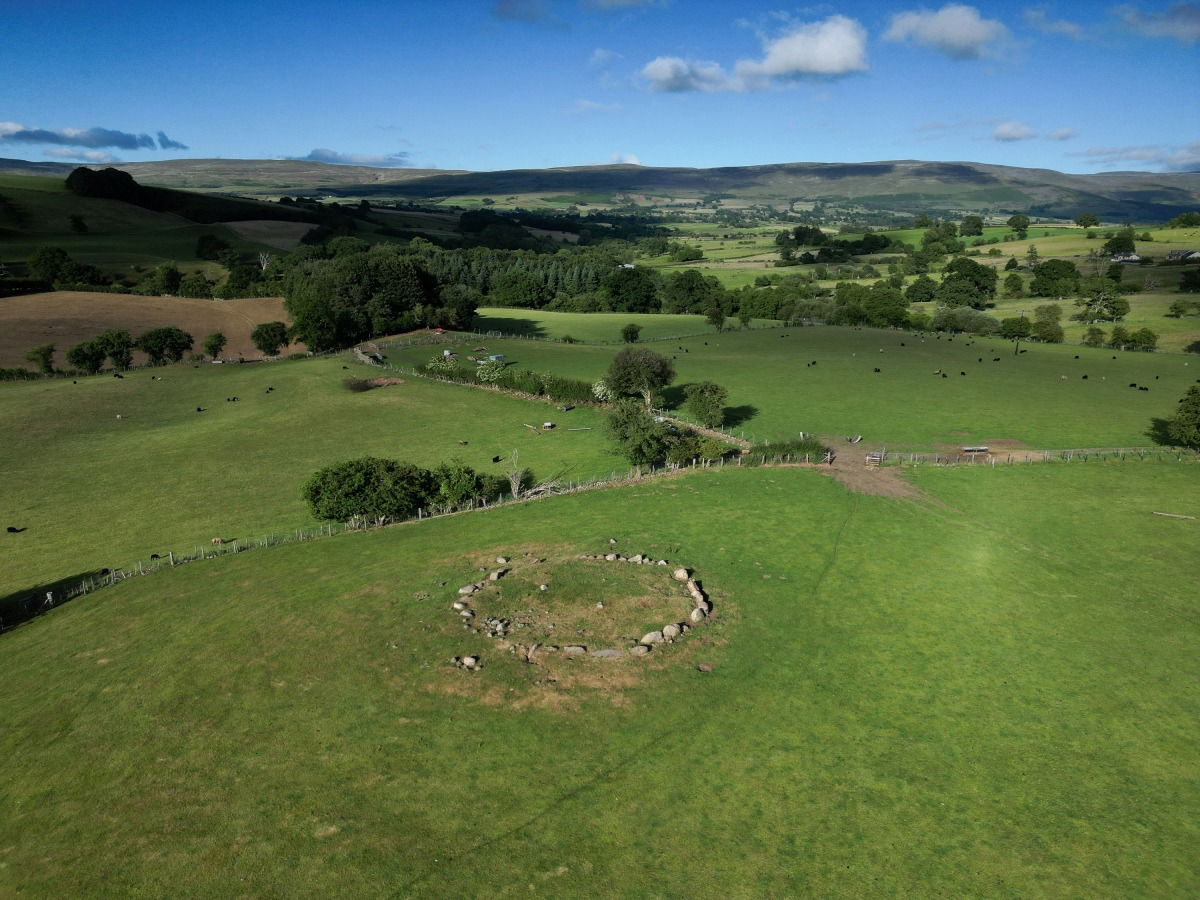
On a recent cruise through Cumbria, we tracked down what initially seemed like an underwhelming stone circle, but a little mooching about for information highlighted that you don't need to be a big old glitzy boulder to be significant. Kinda small pancake flattish stones hold significance too.
The Glassonby Stone Circle is an undergraduate, and as yet shouldn't have really been promoted to the accolade of a stone circle. It's actually known as a kerbed cairn (a bit of a letdown that it's not a big lad, but when you visit Long Meg, you can see why!)
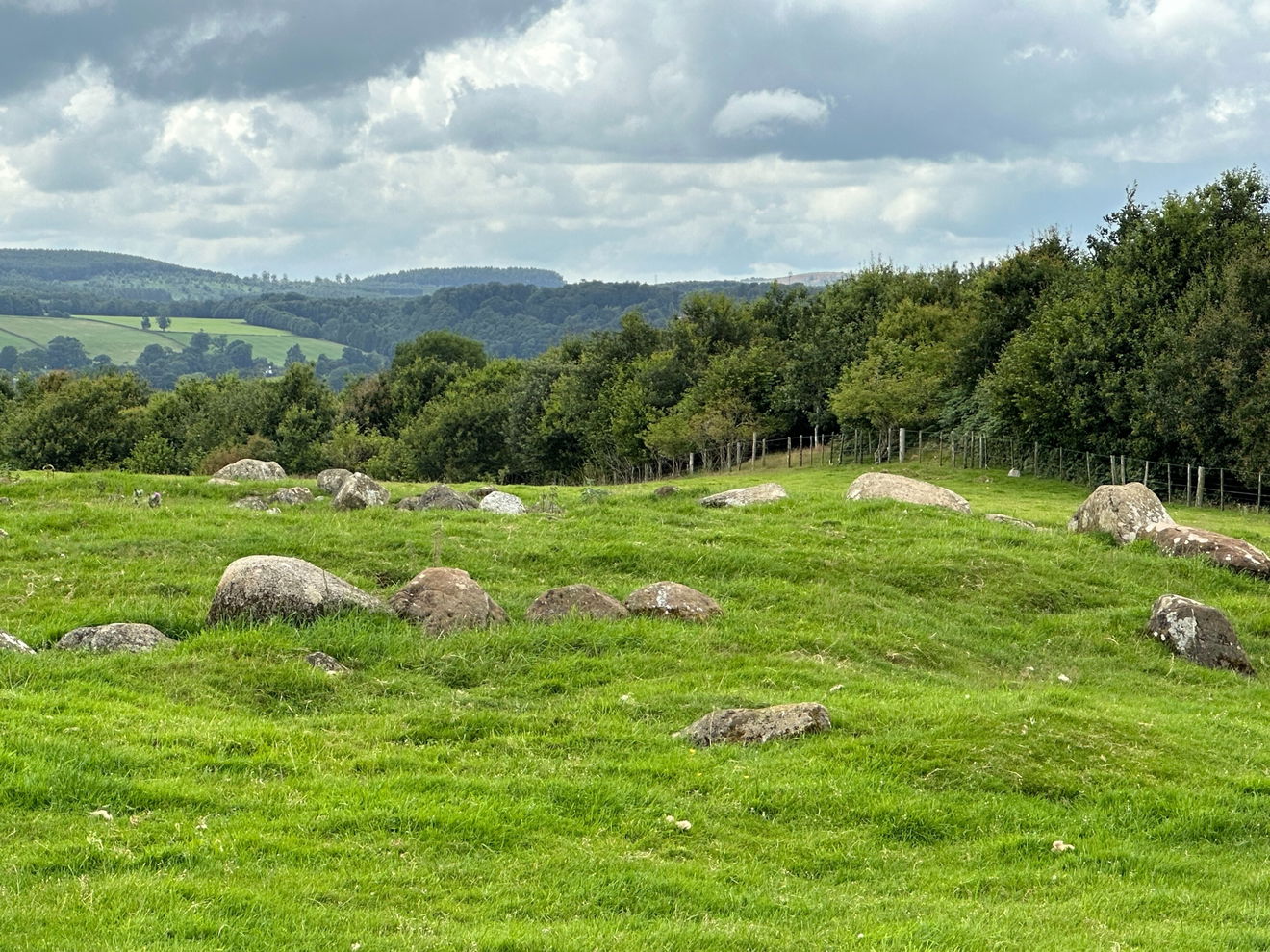
The cairn is on private land, and we made sure to check in with the owners before visiting. Deviating further away from its stone circle status, it's actually a stone oval. It doesn't have quite the same ring eh?


A series of 30 kerb stones originally ovalled their way around, though some have disappeared over the years. I honestly never thought I'd be excited by a standing stone or stone circle and life must've changed for me somewhere along the line!
I once listened to Steve reading enthusiastically from a roadside sign about the Pennymuir Roman Camps in the Borders. It felt like a listening version of watching paint dry, and I put my foot down, drove off, and left him behind as a joke! But, there must be a point in life when things like the Romans and standing stones just find their feet and embed into your psyche!

I was, dare I say, excited to find out that two of the stones had markings of concentric rings and that there was once a cist in the centre of the circle. A cist or kist is a small coffin-like box or ossuary, a box where the skeletal remains of a body are buried if space is tight, a bit like grave recycling!
Also unearthed inside the circle were fragments of blue glass but the cist itself had over the years been robbed.
An image of the Glassonby carved stone below is credited to a Mr. F. W. Tassel and published in the Thornley's 1902 report. The accompanying text states that the carvings were 'very carefully retouched on the spot...Without this retouching the faint marks would hardly have been visible'.
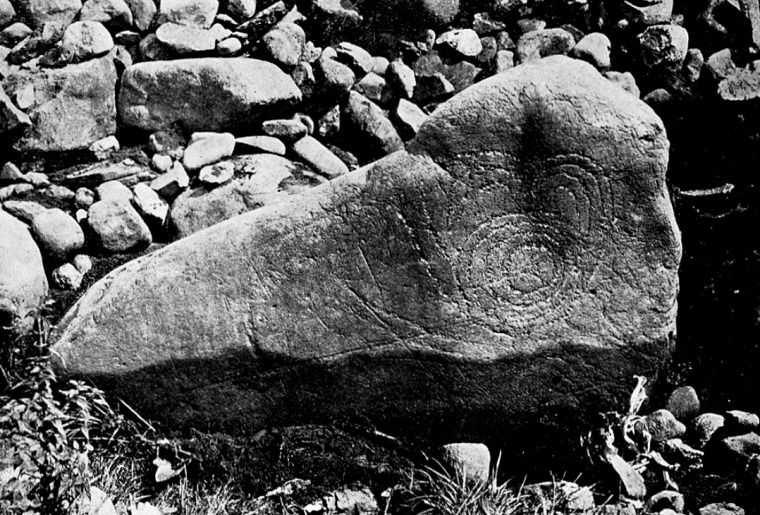
Outside the circle, the remains of burnt bones were discovered! This gave this relatively indistinct patch of land I was standing on new significance. This was the last resting place of someone who was precious to someone, somewhere along the line.
This view and these stones were no longer just a little oddity in the landscape, but a place of meaning and resting; a place where perhaps tears had been shed, where families and friends poured out grief and perhaps returned to mourn.
The bones belonged to a man whose remains were inside a collared urn, now on display at Carlisle Museum. Archaeologists also found the remains of a woman who was not afforded the decoration of an urn for her remains.
I wondered if this was because she was a woman, or was it a cost of living thing, or maybe status-related? Whoever the bones belonged to, they would once have been someone's child.
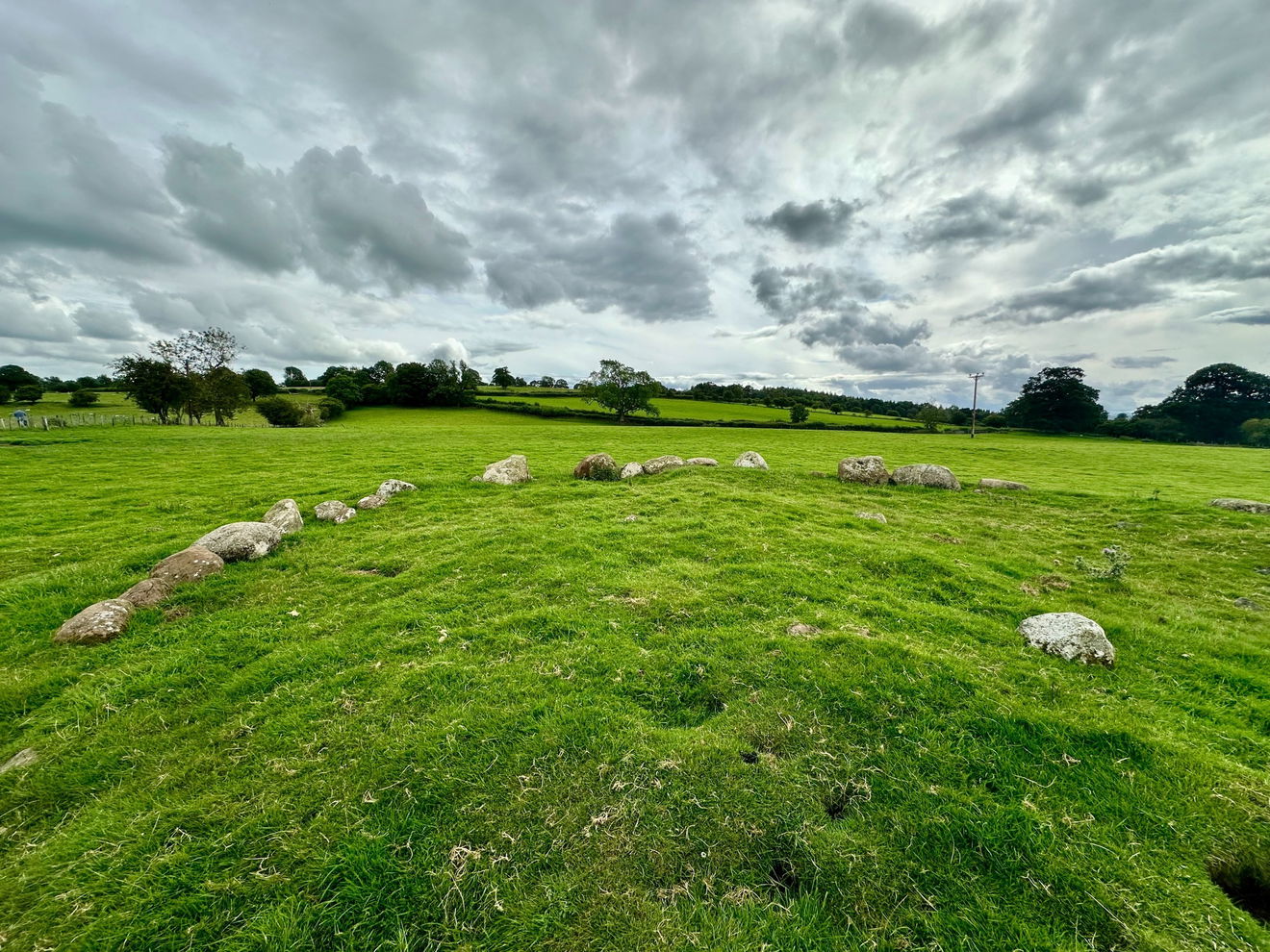
There are marks around the Glassonby Stone Circle to suggest a Neolithic cursus, a type of ditch or trench which envelopes a cist. The term was coined in 1723 by antiquarian William Stukeley, who referred to the curcus at Stonehenge as being like a Roman chariot racing track or circus, circus being the Latin word for circle.
Archaeologists believe the curcus and stone markings relate to a link to both Long Meg, an impressive stone circle to the south west of Glassonby and to The Old Parks Circle to the north east, which has since been destroyed.
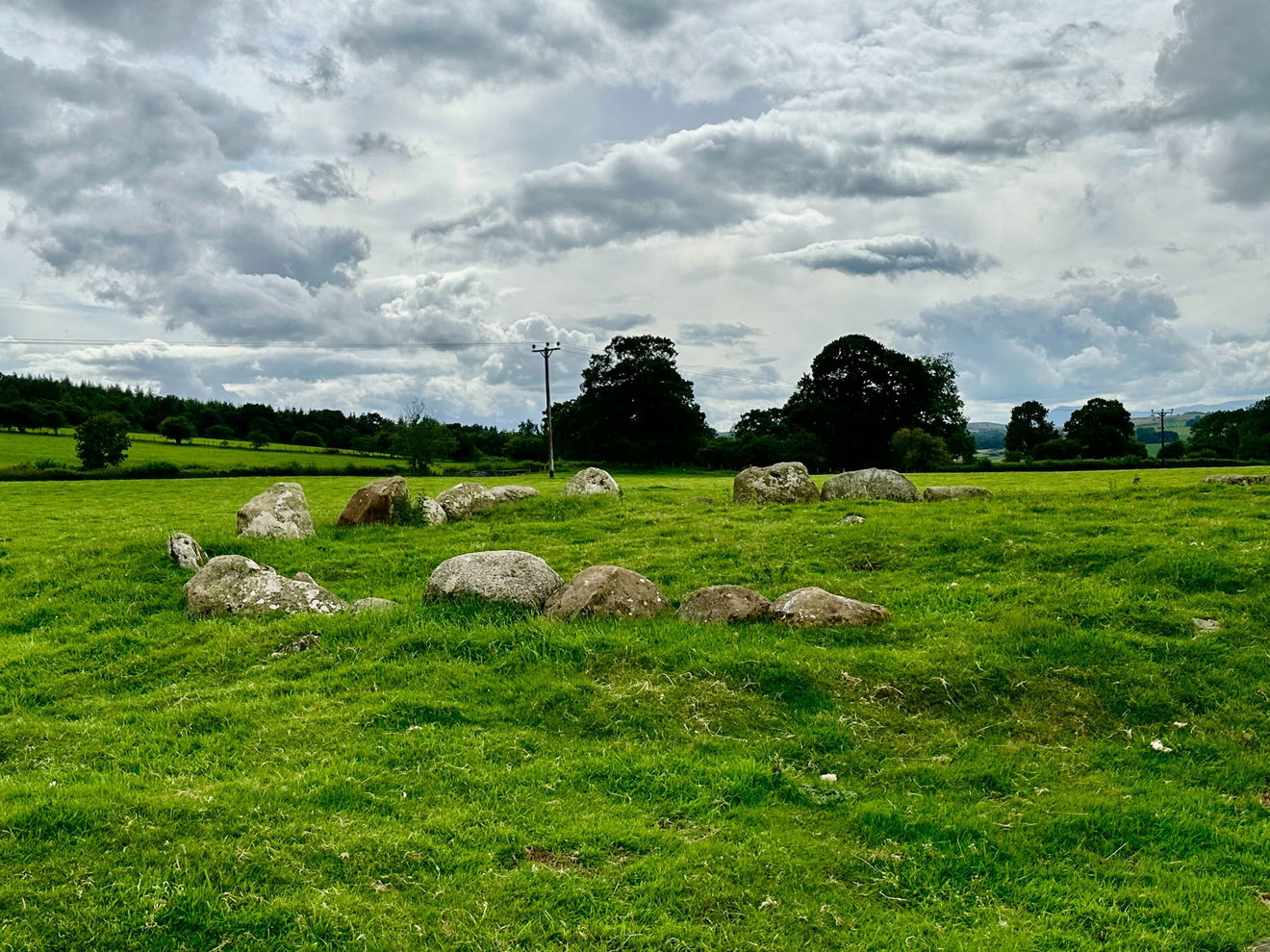
The stone circle at Glassonby was unearthed by William Gershom Collingwood in 1900. Collingwood was an author, artist, antiquary and professor of Fine Arts and notably pals with writer and art critic John Ruskin and author Arthur Ransome. Ransome was so besotted by the experience of spending time with Collingwood on Coniston and sailing over the lake in his boat 'Swallow' that he named his famous novel 'Swallows and Amazons' in homage to this, even naming some of the characters in the novel after Collingwood's grandchildren.
Swallows and cists may have been more accurate on our visit.
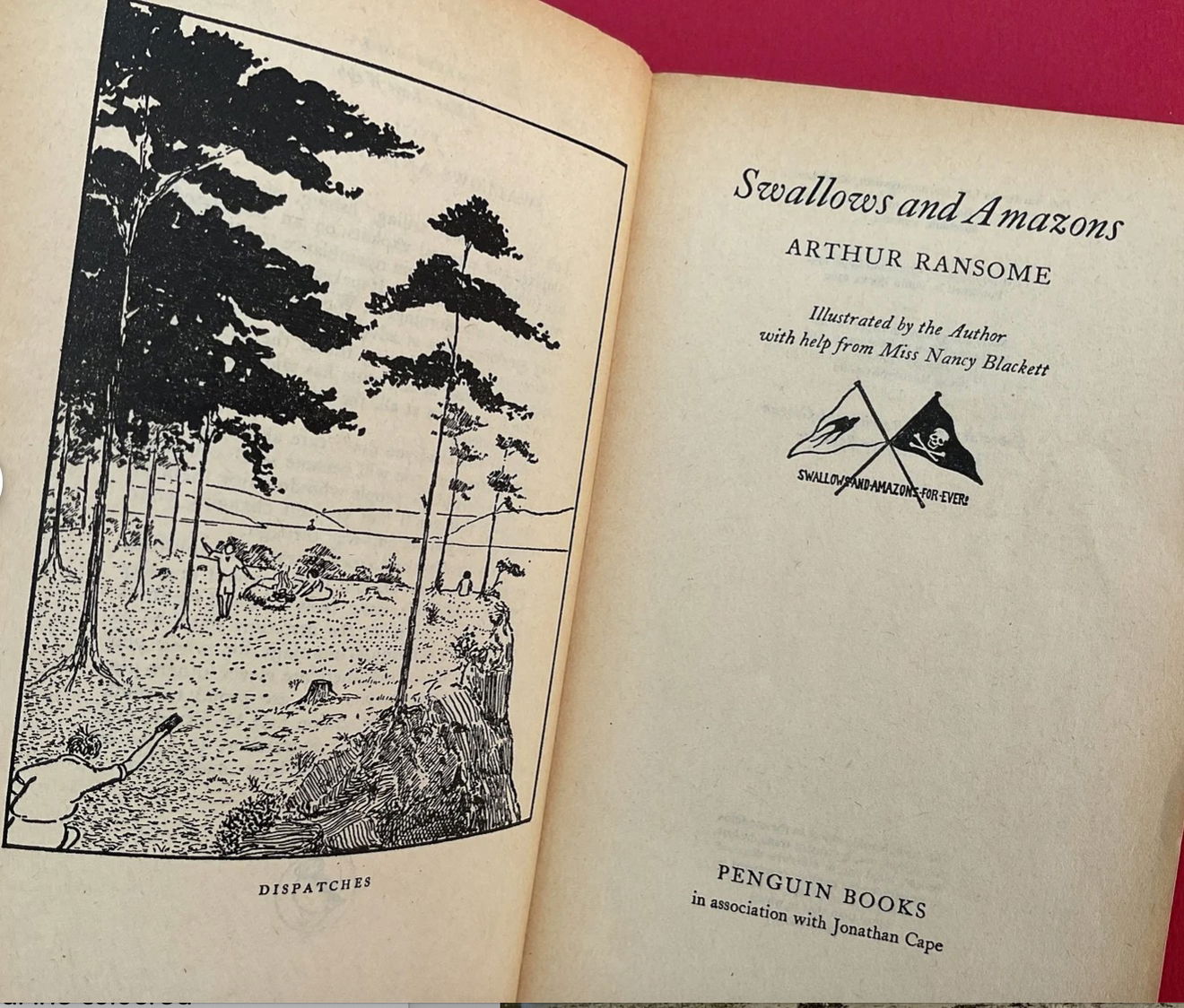
Looking out, there are commanding views out over Melmerby Fell in the Pennines and to the west, over the Eden Valley we could just make out the most northerly of the Lakeland Fells.
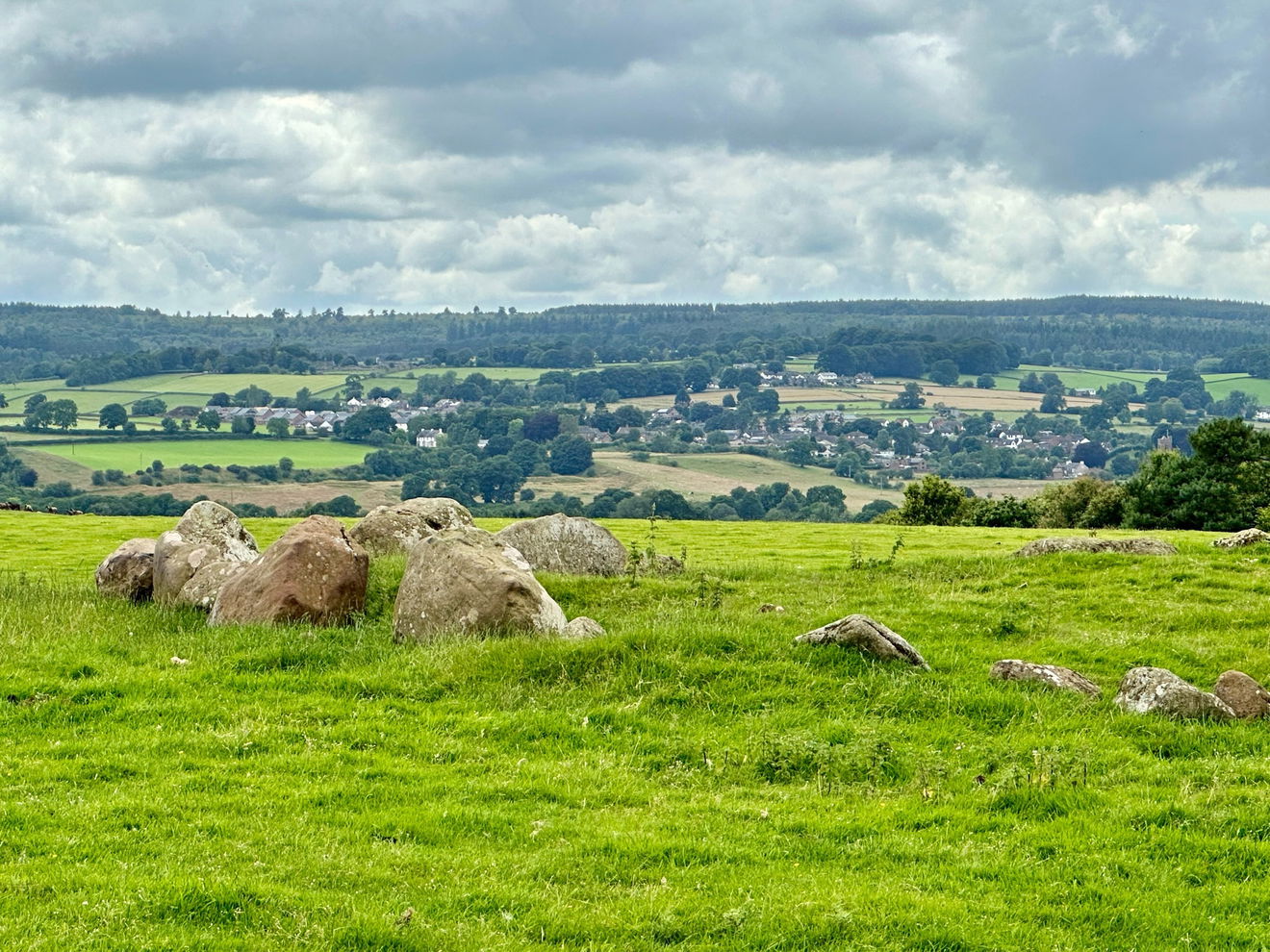
The visually unremarkable stones, the tallest of which stands only 92cm were suddenly intriguing again when I learned that they are made up of carefully chosen stones, picked not only for their shape and size but also for their colour.
It was thought that the coloured stoned may perhaps communicate some meaning which was widely understood in prehistory but which is lost to us now. Red sandstone, Gray Cobble, Gray Cobble, Blue Whin, Gray Cobble, Brecciated Greenstone, Gray Skiddaw Granite, Brecciated Greenstone, Cleaved Greenstone, Cleaved Brecciated Greenstone, Hard White Sandstone, Cobble, Cobble, Gray Cobble - the symbolism of the pattern of stone dotting out on the hillside like rock-ribbed morse code!
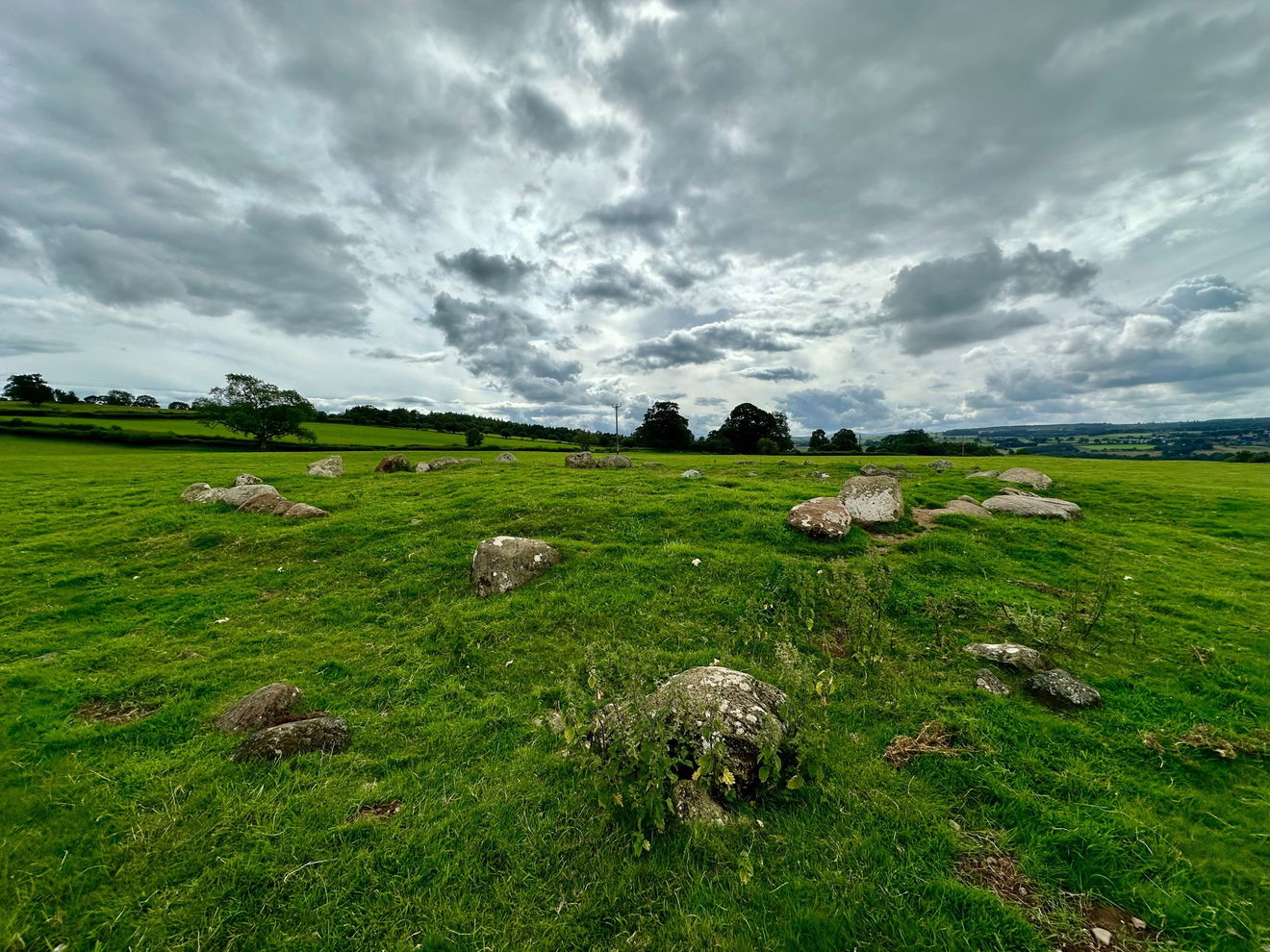
And so, we retreated, a little baffled about the magnitude of the stoney circumference of this moundy mound, insignificant to our twenty-first century eyes, but with a whole heap of symbolism and significance submerged between these stones that someone could once make head nor tail of.
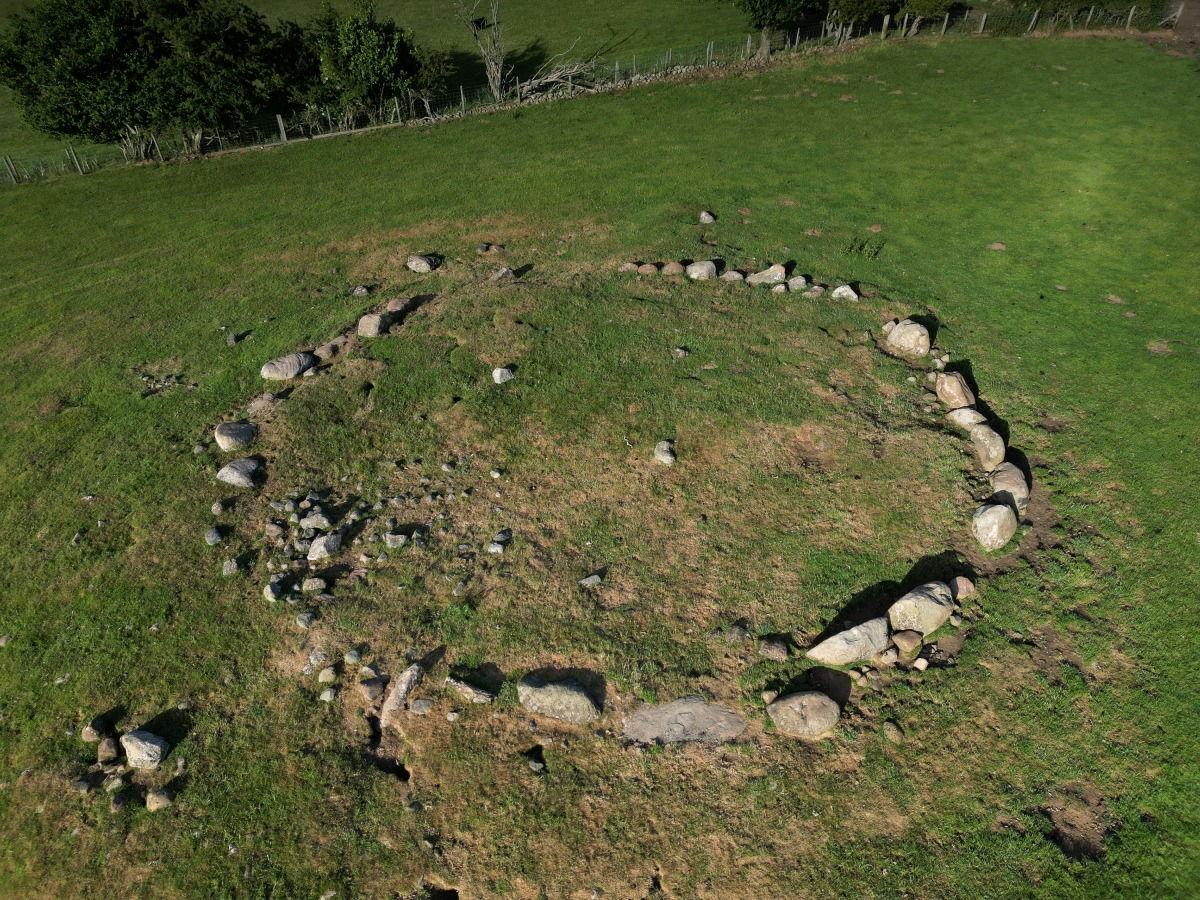
There are plenty more intriguing finds in this neck of the wood and within a short drive like Kirkoswald Castle and the Bell Tower of St Oswald Church.
Thanks loads to Lee Walker for his fantastic aerial shots of Glassonby Stone Circle.
Get 5 points if you have visited this place. Already visited by 14 VIPs.
Login to the VIP area to add places to your bucket list, mark them as visited and more importantly see where you rank on the league table.
How To Find Glassonby Stone Circle
Where Is Glassonby Stone Circle?
Show Place On Google MapsLat / Long
54.747264, -2.665195
What three words
Where To Park For Glassonby Stone Circle?
Contributed by Jos Forester-Melville
Highland loving human. Thalassophile. I love a good smile. Happiest heading for the hills with my pickup filled with kids and dogs! Working four days, we enjoy a Fridate, and usually spend it scouting out new scenery. I love a gated track, a bit of off roading and if it involves a full ford, well, that gets extra points! I go nowhere without a flask and binoculars, and love the small things in life that make it big…Goldcrests, dry stone walls, Deadman’s fingers, blackberries and quality clouds.
More Places from Jos
More Places In Penrith
Find more fabulous places in Penrith, Cumbria and if you know of a place we haven't listed, then let us know.
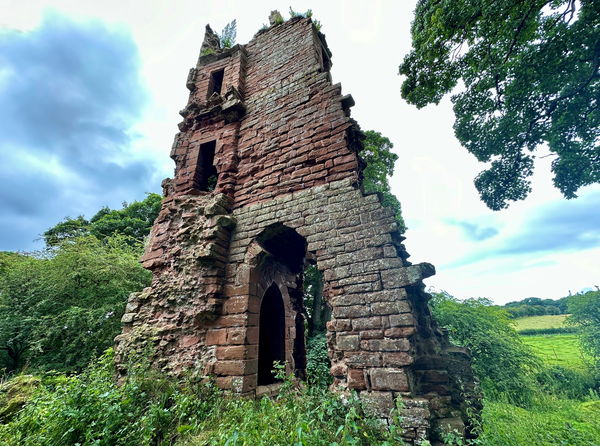
Kirkoswald Castle
Castle Penrith CumbriaA historical sliver in pinky Penrith sandstone, Kirkoswald Castle was built to impress and defend.

Shap Abbey
Religious Place Penrith CumbriaPeaceful, ruined 12th century abbey managed by English Heritage

Lowther Mausoleum
Religious Place Penrith CumbriaA mausoleum for William the second Earl, who died in 1844.
More Stone Circles
So this stone circle wasn't enough and you want more? Don't worry we have you covered.

Dunmoor Hill Stone Circle
Stone Circle Ingram Valley NorthumberlandA little stone circle sitting at the bottom of Dunmoor next to Cunyan Crags.
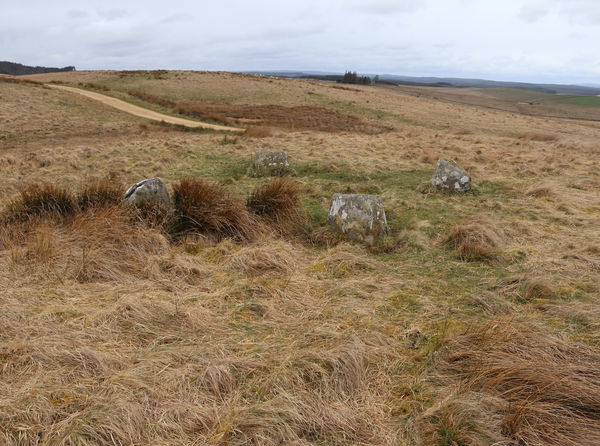
Goatstones
Stone Circle Simonburn NorthumberlandA Bronze Age four-poster stone circle located near Ravensheugh Crags in Northumberland.
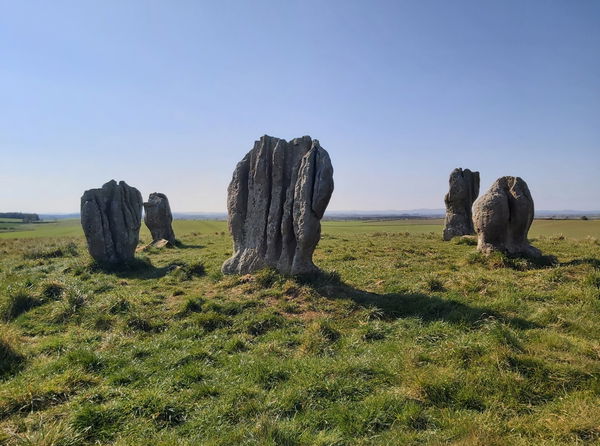
Duddo Stones
Stone Circle Duddo NorthumberlandA small five stone circle set in a beautiful location in Duddo Northumberland.
Never Miss A Fabulous Place
If you are afraid of missing out on all the fabulous places we post, or just want to be the first to know, then sign up to the Fabulous North.
Each week we will email you all the brand new places that we visit.
Sign Up To AlertsFind Us On Facebook
We post all our new places daily on our Facebook Groups page, so join the group today and be notified when we add a new place.
Join Our Facebook GroupGlassonby Stone Circle was listed in Stone Circle // Cumbria // Penrith

